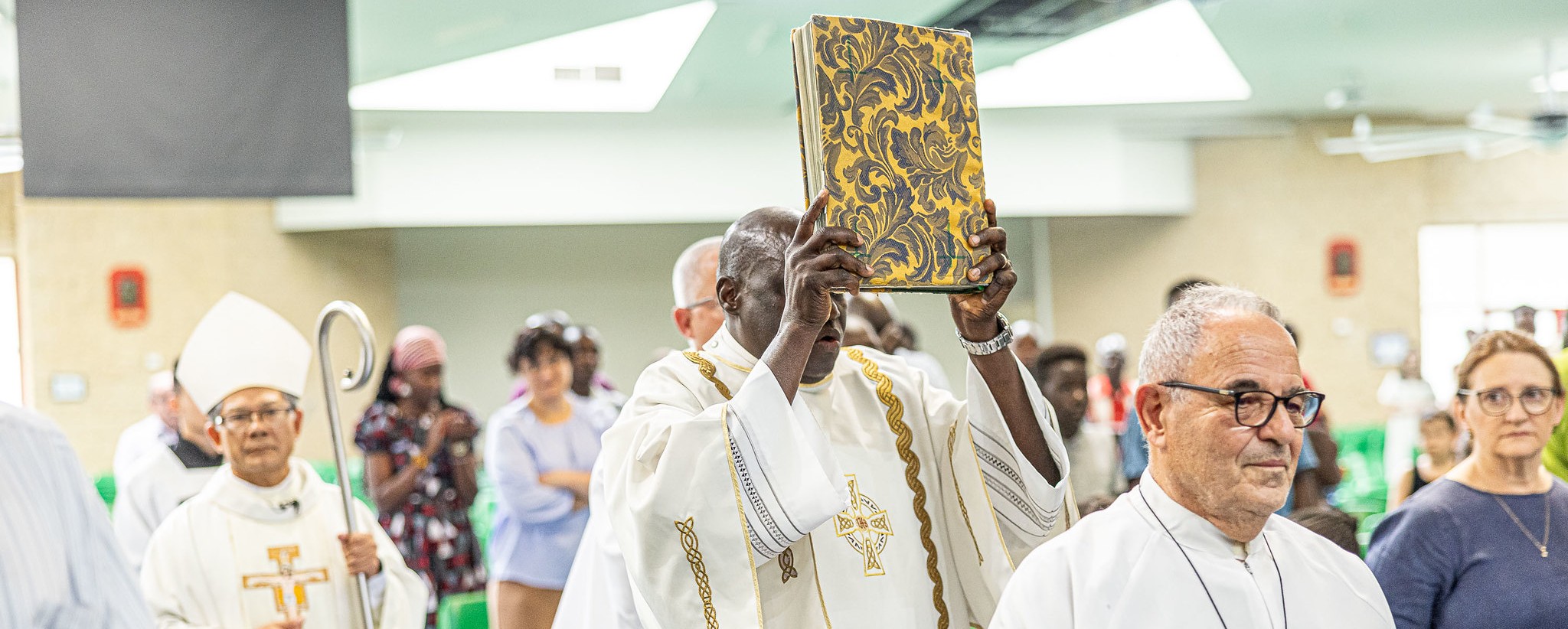The Introductory Rites of the Mass
National Liturgical Council

While the Introductory Rites of the Mass are quite short they are very important, since their purpose is to form those who have gathered – priest and people – into a worshipping community. Liturgy is the work of all the members of the assembly and every person needs to be actively engaged in making sure that this happens. At our Baptism we were made part of the Body of Christ and when we gather for Mass we are joining with Christ to present again his one sacrifice on the Cross to God the Father.
The elements that make up the Introductory Rites are:
Entrance Procession and Song
Sign of the Cross and Greeting
Penitential Act
Glory to God
Collect (Opening Prayer)
The Entrance Procession and Song
It is only after the people have gathered that the priest and other ministers enter, processing from the back of the church through the people to the sanctuary. Those who take part in the procession include the presiding priest, the cross bearer, the censer bearer (if there is to be any incensing), reader(s), altar servers or acolytes, extraordinary ministers of Holy Communion, deacon(s) and any concelebrating priests.
During this procession, the Entrance Song is sung with the fourfold aim of (1) showing that the celebration has begun, (2) uniting those who have gathered, (3) introducing the liturgical season or feast that is being celebrated, and (4) accompanying the priest and ministers to the altar. The song carries out these aims best when it is one that is well-known by the people.
It is not only the priest and ministers who play a special role in the Entrance Procession; equally important is the Book of the Gospels, which is held aloft and carried in the procession either by the deacon (if the parish has one) or one of the readers.
When the priest and ministers reach the altar they bow as a sign of reverence, since the altar is a symbol of Christ. While the other ministers go to their places, the minister carrying the Book of the Gospels places it closed and face-up in the centre of the altar, while the priest kisses the altar. It is at this point that the altar may also be incensed.
The Entrance Hymn continues until after the priest has reached the presidential chair.
The Sign of the Cross and Greeting
Our first action, the Sign of the Cross, identifies us as people who belong to the Trinity through the person of Christ. This sign marks us out as Christ-ians.
The priest then greets us with words that come from Scripture and may add a few brief comments about this particular feast/celebration.
The Penitential Act
We are always in need of God’s loving mercy, and all three options for the Penitential Act clearly bring out this fact.
The first option, ‘I confess to almighty God….’ focuses on our own sinfulness and its effect on those around us; the second is a very brief acknowledgement of our sin and a call on God’s mercy; the third consists of three brief sentences about the qualities of Christ to which the people respond ‘Lord, have mercy, Christ, have mercy, Lord, have mercy.’
All three forms of the Penitential Act conclude by calling on God to forgive our sins and bring us to everlasting life.
On any Sunday the Penitential Act may be replaced by the Sprinkling Rite. This consists of an invitation by the priest for the people to pray, a prayer of blessing is then prayed after which the priest sprinkles the people with holy water while an appropriate antiphon is sung. This rite is particularly suitable for the weeks of Easter time.
The Gloria
This very ancient hymn praises God and Jesus, the Lamb of God, who takes away the sin of the world. It concludes with an acknowledgement of the Trinity. It is said or sung on Sundays (except during Lent and Advent) and on other major feastdays, and cannot be replaced by any other text.
The Collect (Opening Prayer)
This prayer sums up the Introductory Rites and brings them to a close. The priest announces it with the words, ‘Let us pray’ and then allows a period of silence so that the people can formulate in their minds what they want to pray about. The priest then prays on behalf of the entire assembly by addressing God, voicing a general petition, and then concluding with a set formula that again acknowledges the Trinity. The people’s response to this prayer is ‘Amen’ – yes, let this be so!
A good deal of the Introductory Rites takes the form of dialogue between the priest and the people. Through it the community should be drawn together in heart and mind so as to be well disposed to listen attentively to the proclamation of God’s word that the Liturgy of the Word brings. To mark the change from one activity to another we change our posture from standing to sitting and shift our attention from the presider’s chair to the lectern or pulpit.
